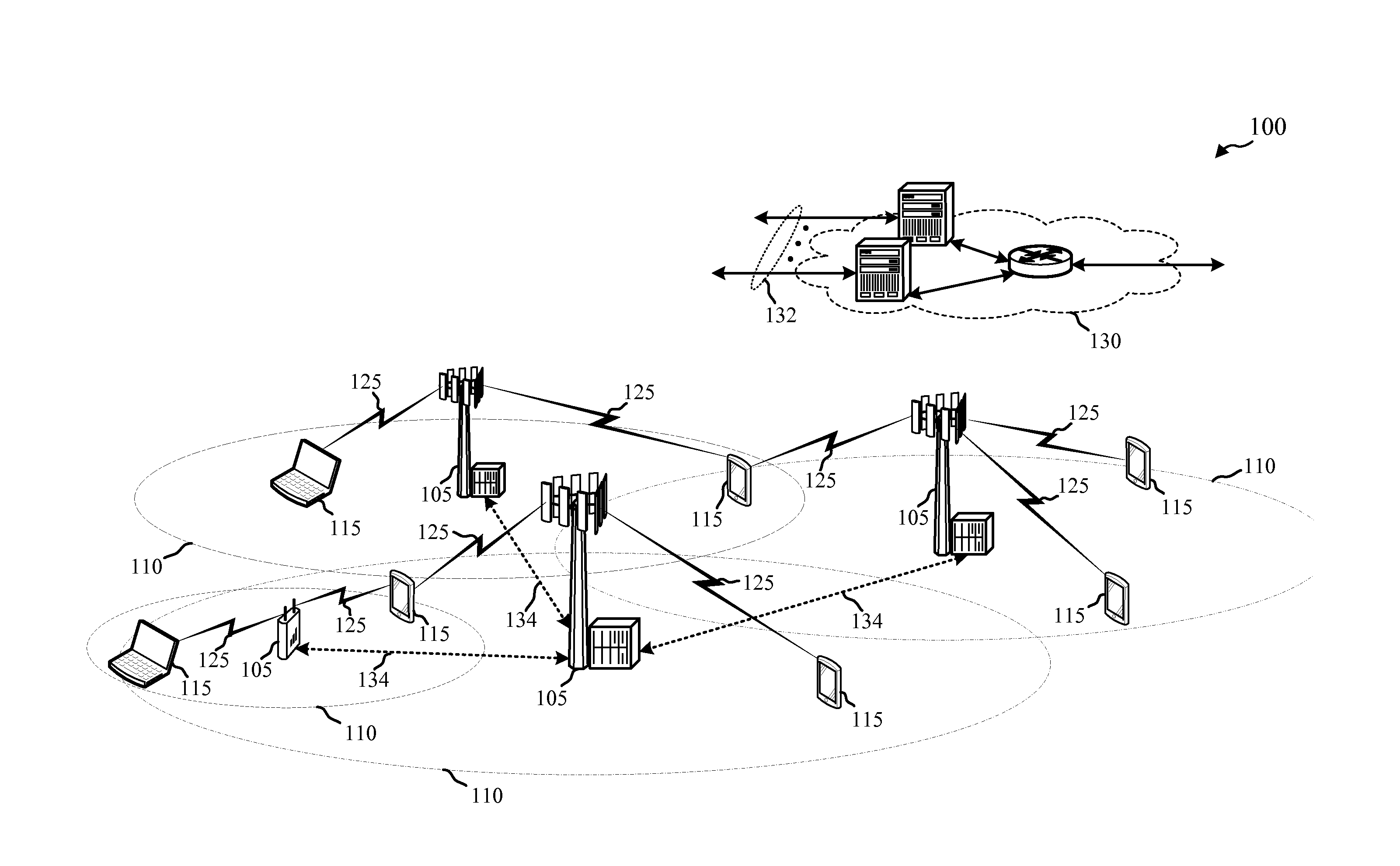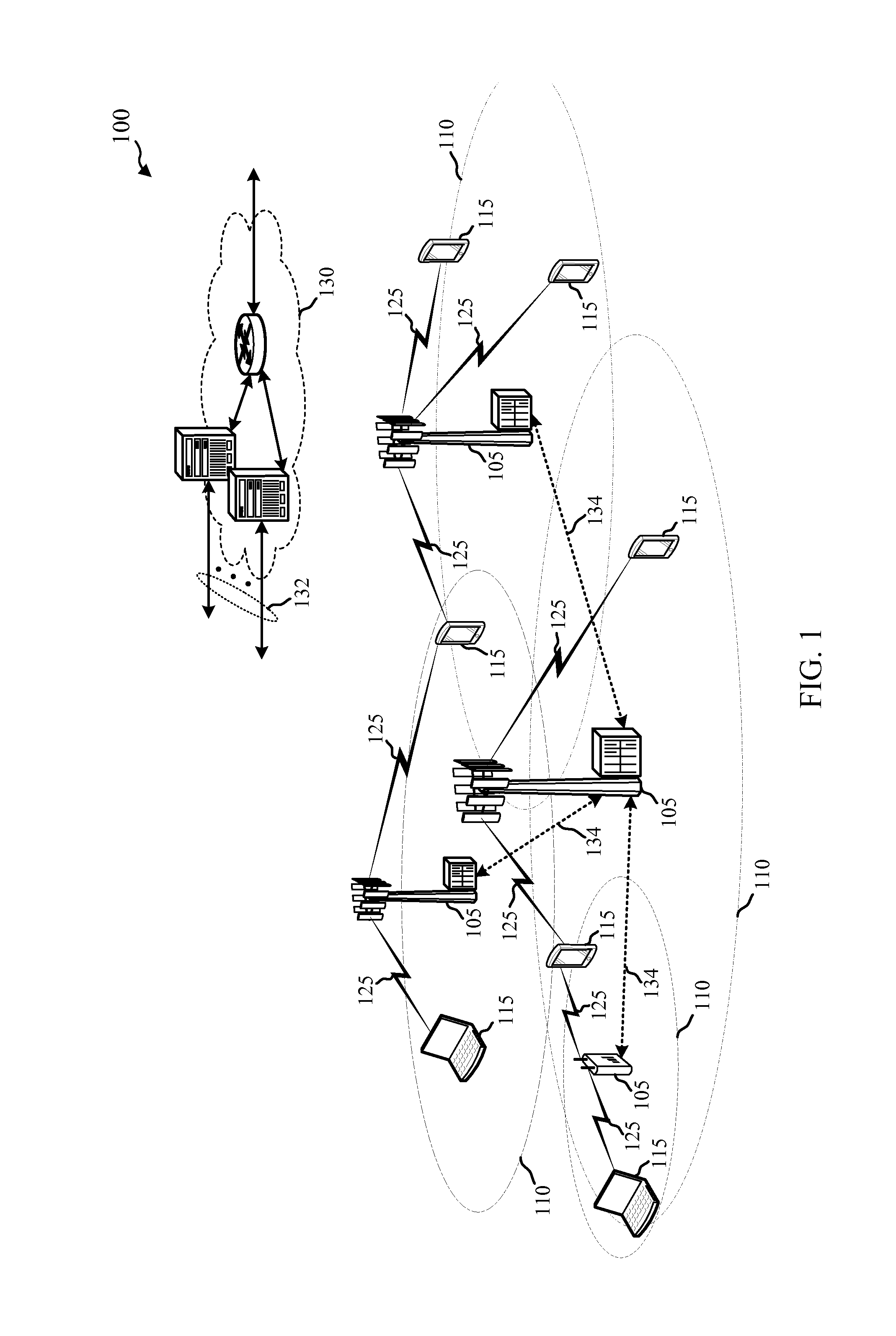Resource partitioning in millimeter wave networks
a technology of resource partitioning and millimeter wave, applied in the field of resource partitioning functions for backhaul operations in millimeter wave wireless communication systems, can solve the problems of affecting the quality and availability of links to a network entity, and not typically performing discovery over the wireless medium, and achieve the effect of low latency
- Summary
- Abstract
- Description
- Claims
- Application Information
AI Technical Summary
Benefits of technology
Problems solved by technology
Method used
Image
Examples
Embodiment Construction
[0034]Next generation cellular communication systems may utilize mmW wireless communication channels. Such mmW communication channels may involve using frequencies in the 20+GHz range, which requires additional considerations in the development and deployment of the infrastructure components. For example, mmW wireless links tend to have a smaller geographic coverage area and often require use of directional transmissions. In order to provide wide scale coverage, a more dense population of mmW base stations may be deployed, with respect to traditional macro base stations for existing cellular communication systems. In some environments, it may not be reasonable from a cost and / or feasibility perspective, to deploy high speed wired communication links to every mmW base station. For example, not every deployment location will be suitable for a strong communication link between the mmW base station and a network entity. The mmW base stations with limited or no direct links to a network ...
PUM
 Login to View More
Login to View More Abstract
Description
Claims
Application Information
 Login to View More
Login to View More - R&D
- Intellectual Property
- Life Sciences
- Materials
- Tech Scout
- Unparalleled Data Quality
- Higher Quality Content
- 60% Fewer Hallucinations
Browse by: Latest US Patents, China's latest patents, Technical Efficacy Thesaurus, Application Domain, Technology Topic, Popular Technical Reports.
© 2025 PatSnap. All rights reserved.Legal|Privacy policy|Modern Slavery Act Transparency Statement|Sitemap|About US| Contact US: help@patsnap.com



